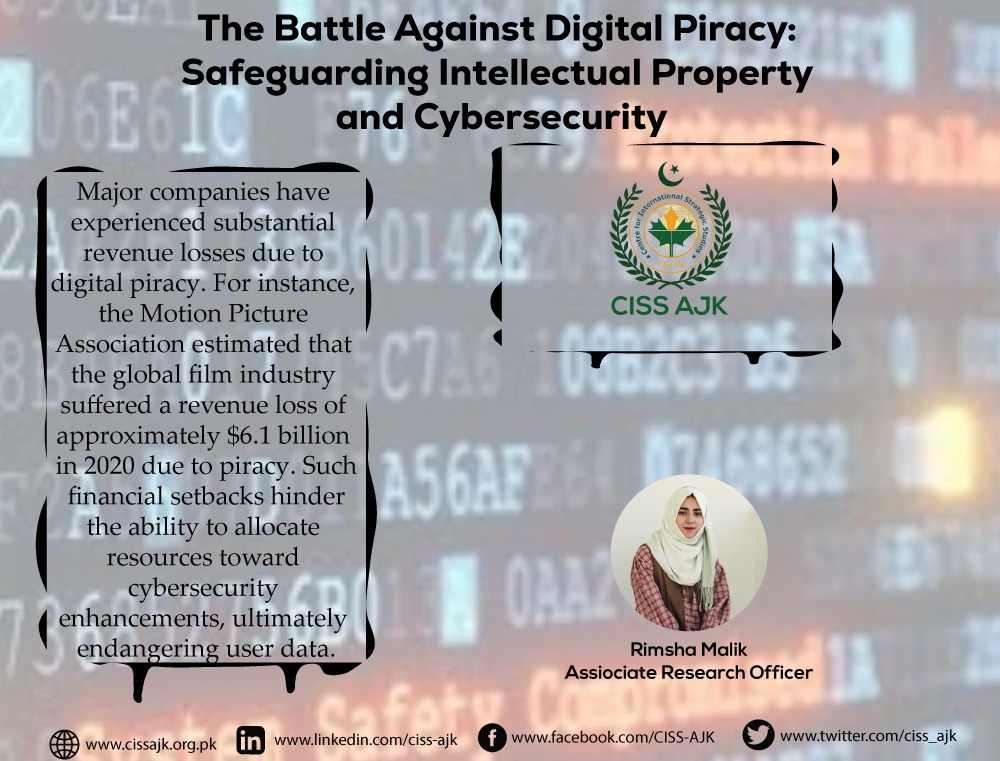We live in a digital world where we can access any content we want with a click of a button. But what if that content is stolen from its rightful owners? What if we are putting ourselves and our devices at risk by downloading or streaming pirated material? This is the reality of digital piracy, a global problem that affects us all. Digital piracy is stealing creative works such as software, movies, music, e-books, and more. It robs content creators of their hard-earned income and their ability to make a living from their talents. It also exposes us to cyberattacks that can steal our personal data and damage our devices.
Digital piracy kills innovation and creativity by making it harder for content creators to fund new projects and produce original and high-quality content.
We need to respect the intellectual property rights of content creators and support them by consuming their content legally and ethically.
The Impact of Digital Piracy on Cybersecurity Digital piracy undermines cybersecurity in various ways, leaving a trail of consequences that extend far beyond financial losses. Numerous reports highlight the correlation between digital piracy platforms and the proliferation of malware. According to cybersecurity firm McAfee, a significant portion of pirated software downloads includes malware, which can compromise user devices and personal data, potentially leading to devastating cyberattacks. The music and film industries have been heavily impacted by digital piracy.The International Federation of the Phonographic Industry (IFPI) reported that in 2020, 27% of global music consumers accessed unauthorized music sources, resulting in an estimated loss of $2.7 billion.These financial setbacks impede investment in cybersecurity measures and innovative content creation. Major companies have experienced substantial revenue losses due to digital piracy. For instance, the Motion Picture Association estimated that the global film industry suffered a revenue loss of approximately $6.1 billion in 2020 due to piracy. Such financial setbacks hinder the ability to allocate resources toward cybersecurity enhancements, ultimately endangering user data. The high cost of digital content and geographical restrictions contribute to the prevalence of piracy. For example, a study conducted by Ernst & Young revealed that in some countries, the average price of digital content is significantly higher compared to the average income, driving users towards pirated alternatives for affordability. Technological advancements have made it easier to copy and distribute copyrighted material. Peer-to-peer (P2P) file-sharing networks, streaming platforms, and torrent websites provide convenient avenues for sharing pirated content globally. The ease of access and anonymity provided by these platforms fuels the growth of digital piracy. Cultural attitudes towards intellectual property and piracy differ across regions. For instance, in some countries, the cultural perception of piracy as a victimless crime or an act of civil disobedience contributes to its social acceptance. These attitudes, combined with limited awareness of the consequences, further perpetuate piracy practices. Combating Digital Piracy: A Multi-pronged Approach Addressing digital piracy requires a comprehensive and multi-faceted approach that encompasses legal, technological, and educational interventions. Governments worldwide must establish and enforce robust intellectual property laws. For example, in 2021, the European Union implemented the Digital Services Act, imposing stricter regulations on online platforms to combat piracy and protect intellectual property rights. Such legal measures act as deterrents and provide a foundation for international cooperation against piracy. Digital rights management (DRM) systems play a vital role in protecting content and mitigating piracy. Primary streaming services like Netflix and Spotify employ sophisticated DRM technologies to safeguard their content from unauthorized access and distribution. Collaboration with ISPs to implement site-blocking measures has also proven effective in reducing access to piracy platforms. Raising awareness about the consequences of piracy is crucial. Organizations such as Creative Content UK (CCUK) have launched educational campaigns in schools and colleges to educate students about piracy’s ethical and economic implications. These initiatives aim to foster a culture of respect for intellectual property and discourage participation in piracy.
Digital piracy poses a significant challenge to cybersecurity on an international scale. By strengthening legal frameworks, implementing technological solutions, and promoting education and awareness, we can combat piracy effectively.International cooperation and a collective effort are essential in protecting digital assets, encouraging innovation, and safeguarding the cybersecurity landscape for the benefit of all.




